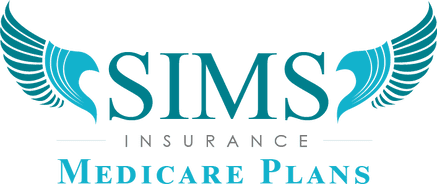Parts of Medicare
Medicare is a health insurance program that is divided into various parts, with each part covering various approved healthcare costs. Original Medicare (Part A and B) is run by the government, while the rest are offered by Medicare-approved private insurance companies.
In this guide, we’ll make a quick breakdown of the various Medicare parts so you can understand the coverage involved with each.
Part A
Medicare Part A and B are known together as Original Medicare. To enroll in any of the other parts of Medicare, you must first be enrolled in Original Medicare. Part A covers inpatient medical services such as hospice care, skilled nursing facility care, hospital insurance, and some home healthcare services.
Part A plans come with out-of-pocket costs such as deductibles, coinsurance, and copayments. However, most people do not need to pay Part A premiums if they paid Medicare taxes while employed. You can enroll in Part A during your Initial Enrollment Period, General Enrollment Period, or automatically if you get benefits from Social Security or the Railroad Retirement Board.
Ready For A Quote?
- Free Consultation
- Need Medicare Help?
- Get fast quotes
We are not connected with or endorsed by the United States government or the federal Medicare program.
Part B
Medicare Part B is the second part of Original Medicare and provides coverage for outpatient medical services like doctor visits, preventive screenings, durable medical equipment, lab tests, ER services, mental health services, and ambulance transportation. While Part A is premium-free for most people, you will most likely have to pay for your Part B premiums; also, the higher your income, the higher your premium could be. However, if you get Social Security, it is possible just to have the premium payment automatically taken out from that.
There are other out-of-pocket costs such as deductibles, copayments, and coinsurance that you will be required to cover. After meeting the annual deductible, though, Part B will cover 80% of the approved costs for the services under the plan.
It is important to enroll for Part B as soon as you are eligible as there is a late enrollment penalty that will be added to your premium if you fail to enroll during your Initial Enrollment Period. It is possible to enroll during other periods, but there is the risk of being stuck with the penalty if you do so, unless it is during a Special Enrollment Period.
Medicare Advantage (Part C)
Unlike Medicare Part A and Part B, Medicare Advantage plans (Part C) are provided by Medicare-approved insurance companies. It combines Part A and Part B coverage, meaning it covers the same healthcare services as Original Medicare.
Most Part C plans also cover additional services such as prescription drug coverage, routine dental, vision, and hearing services, gym memberships, wellness programs, and more.
To enroll in a Medicare Advantage plan, you must be enrolled in Original Medicare.
Part D
Like Part C, Medicare Part D plans are sold by insurance companies that are contracted with Medicare. Medicare Part D is a standalone prescription drug coverage plan and can be used alongside your Original Medicare coverage. It can also be included as an added benefit in a Medicare Advantage plan if you were to go that route.
Each Part D plan has a formulary, which is the list of drugs that are covered by the plan. While the formularies of each plan can differ, there are specific drugs they all must cover, such as those in these classes:
- Anticancer
- Antidepressants
- Anticonvulsants
- Antipsychotics
- Immunosuppressants
- HIV/AIDs
- Common vaccines
Medicare Supplement
Medicare Supplement plans are also known as Medigap plans. They are sold by private insurers and help provide coverage for out-of-pocket expenses that Original Medicare would typically leave in the hands of you. These out-of-pocket costs can include deductibles, coinsurance, copayments, and more. However, each plan provides a different percentage of coverage for each cost. With that being said, there are ten supplement plans available for you to review: Plans A, B, C, D, F, G, K, L, M, and N.
To learn more about each part of Medicare and better understand how these plans could benefit you, reach out to us today. We are here to make you stay fully informed on all your coverage options.

